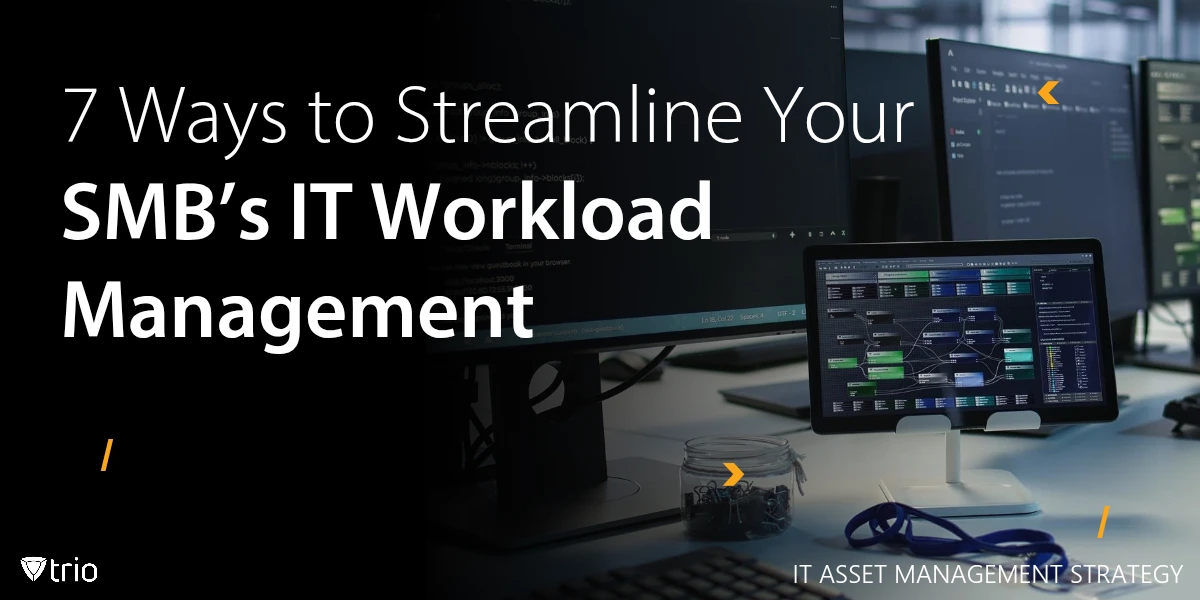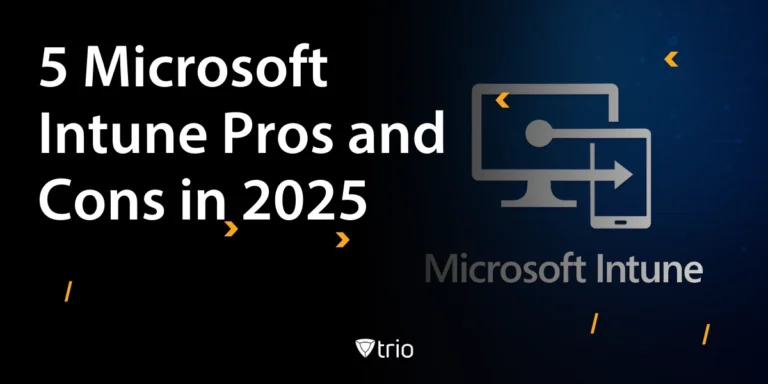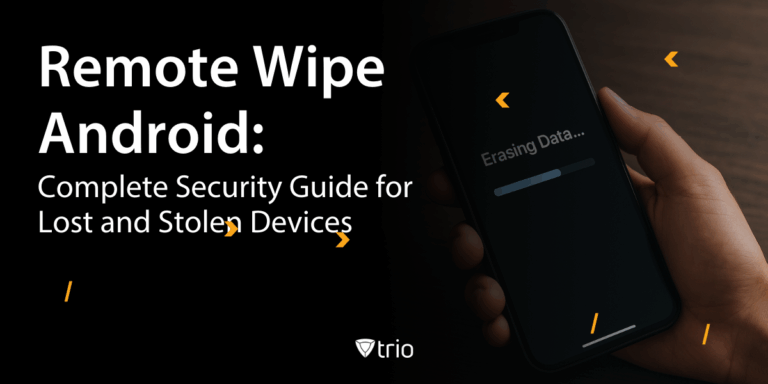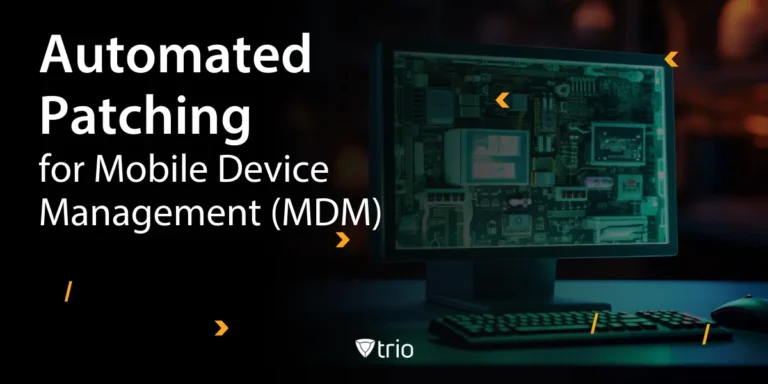Picture this: Your lead IT admin is troubleshooting a sales rep’s frozen iPad at 10 PM while critical security patches gather dust. Meanwhile, three new hires start tomorrow, needing configured devices. Sound familiar? For SMBs, mobile device chaos isn’t just frustrating; it’s a productivity killer, eating up to 30% of IT time. With 78% of SMB employees using mobile devices for core work, unmanaged endpoints drown lean IT teams in reactive chaos. 70% of knowledge workers report feeling overworked and on the verge of burnout. For IT administrators at small and medium-sized businesses (SMBs), this is a daily reality.
What Is IT Workload Management?
IT workload management refers to the processes, tools, and strategies used to plan, prioritize, allocate, and monitor IT tasks and resources. It is usually a part of a bigger IT asset management strategy. For SMBs, this includes managing everything from routine maintenance (e.g., software updates, backups) to strategic initiatives (e.g., cloud migration, cybersecurity enhancements). The goal is to ensure that IT operations align with business objectives, minimize downtime, and maximize resource efficiency.
For SMBs, IT workload management often involves balancing reactive tasks (e.g., troubleshooting a server outage) with proactive ones (e.g., implementing a new CRM system). Without proper management, IT teams can become overwhelmed, leading to burnout, errors, or delayed projects. Effective workload management enables SMBs to stay agile, secure, and prepared for growth.
Why IT Workload Management Matters for SMBs
Here are five reasons why IT workload management is important for SMBs:
- Limited Resources: SMBs typically have small IT teams, sometimes just one or two people, or rely on managed service providers (MSPs), so IT resource allocation can become a complicated task. Efficient workload management ensures that limited resources are used effectively, reducing waste and maximizing impact.
- Cost Control: Mismanaged IT workloads can lead to costly downtime, delayed projects, or inefficient use of tools. Proper management helps SMBs avoid unexpected expenses, reduce IT costs, and stay within budget.
- Scalability: As SMBs grow, their IT needs evolve. Effective workload management ensures that IT infrastructure and processes can scale without creating bottlenecks or requiring costly overhauls.
- Security: Cybersecurity threats are a top concern for SMBs, which are often targeted due to perceived vulnerabilities. Managing workloads effectively ensures that security patches, updates, and monitoring are prioritized, reducing risks.
- Customer Satisfaction: IT underpins many customer-facing processes, such as e-commerce platforms, CRM systems, or helpdesk support. Poor workload management can lead to system failures that frustrate customers and harm the business’s reputation.
7 MDM-Powered Strategies to Conquer IT Overload
To overcome these challenges, SMBs can adopt the following strategies throughout the planning of their IT infrastructure to manage IT workloads effectively. Before diving into these 7 ways, it’s worth addressing what this list doesn’t include:
- No legacy tools – Traditional IT tools often require too much manual effort and don’t scale well in modern environments.
- No manual processes – Repetitive tasks handled manually are time-consuming and error-prone.
- No outdated workarounds – They may solve short-term issues, but they rarely offer long-term efficiency.
Why Legacy Tools Fail and Modern MDM Wins
| Legacy Approach | Modern MDM (e.g., Trio) |
|---|---|
| Manual device enrollment | Zero-touch setup for all major OS platforms |
| On-prem servers | Cloud-native; no hardware to buy or maintain |
| Complex policy scripting | Drag-and-drop templates for rapid policy creation |
| Per-device licensing | User-based pricing scales predictably |
| No real-time visibility | Live dashboards for all endpoints |
Below are seven core tactics you can deploy today to transform your IT workload management. All 7 methods you'll see below are powered by Mobile Device Management (MDM), because it’s the most effective, scalable way to manage today’s IT workloads.
1. Automate Device Lifecycles (up to 60% Time Savings)
- Action: Implement zero-touch enrollment via Apple Business Manager, Android Zero-Touch, and Windows Autopilot.
- Impact: New hires self-provision devices; default security and app policies apply automatically without IT intervention.
Example: A 30‑person consultancy eliminated 45 manual provisioning hours per month, freeing staff to focus on process improvements.
2. Mandate Automated Security Hygiene (5+ hrs/week Saved)
- Action: Create update policies that force OS and app updates within 48 hours, scheduling installs during off-peak hours.
- Impact: Automated patching prevents 60% of mobile‑borne breaches (Verizon Mobile Security Report).
3. Centralize Helpdesk Control (70% Ticket Reduction)
- Action: Use remote assistance and screen‑share features to diagnose and fix issues instantly.
- Impact: MSPs have reduced mobile‑related tickets by 70%, translating into major support cost savings.
Tip: Integrate an MDM console with your ITSM platform to auto‑create incident tickets.
4. Enforce Intelligent Policies (3+ hrs/week Saved)
- Action: Deploy context‑aware rules, such as disabling cameras in secure areas or wiping devices after five failed login attempts.
- Impact: Reduces human error by automating repetitive security checks.
Visualize your rules in a simple flowchart to train support teams in under 10 minutes.
5. Slash Compliance Overhead (8+ hrs/audit Saved)
- Action: Generate real‑time reports on devices missing encryption, apps outside the corporate whitelist, and outdated OS versions.
- Impact: Audit prep moves from reactive chaos to proactive visibility.
HIPAA Tip: Run “what‑if” compliance checks against personas (e.g., finance, sales) to verify role‑based access controls.
6. Contain BYOD Risks (Employee Confidence ↑)
- Action: Enforce work profiles that isolate corporate email, files, and apps from personal data.
- Impact: Maintains employee privacy while securing corporate assets.
Employee FAQ: “Will you see my photos?” Answer: “No, we only see work container data.”
7. Optimize Costs Proactively ($$$ Saved)
- Action: Employ usage analytics dashboards to identify idle devices, expired licenses, and over‑provisioned data plans.
- Impact: Right‑sizes spend before renewal cycles hit.
ROI Example: A mid‑sized bank recovered 20% of its mobile budget by eliminating ghost devices and consolidating data plans.
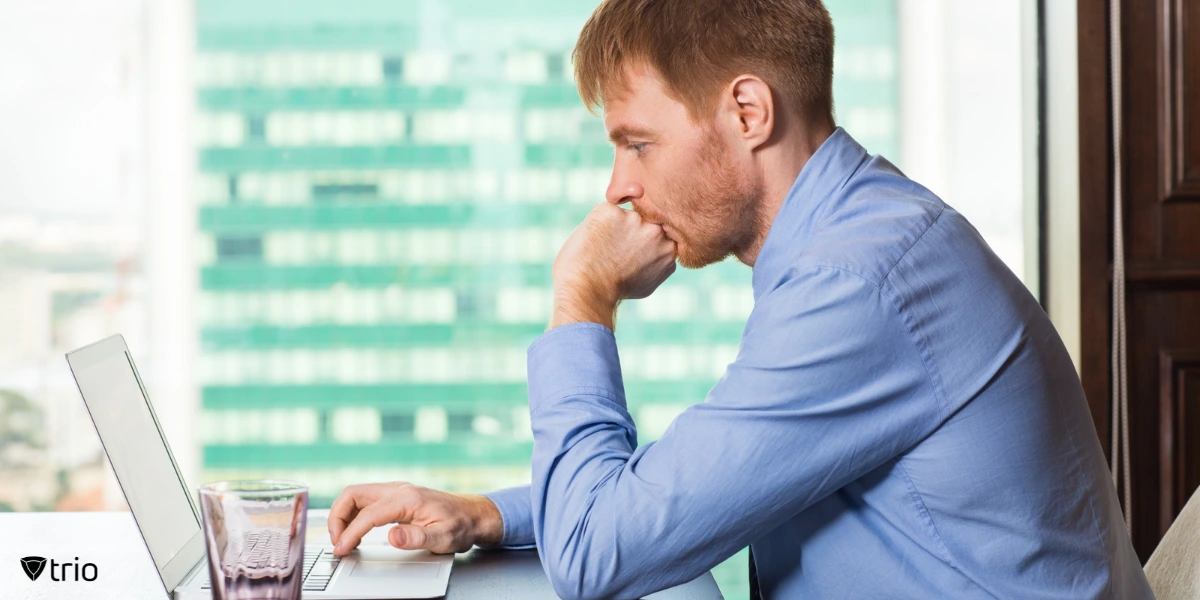
The Staggering Cost of Ignoring Mobile Workload Management
| Consequence | Impact on SMBs |
|---|---|
| Breach via mobile | Data loss & reputational damage |
| Manual onboarding | Wasted IT hours & delayed hires |
| Unpatched devices | Ransomware downtime |
| Compliance failure | Regulatory fines & legal fees |
Reality Check: A single breach can cost more than your annual MDM subscription by an order of magnitude.
Your Mobile Efficiency Blueprint: Next Steps
- Audit Pain Points: Record one week of mobile-related tickets and time spent.
- Prioritize Quick Wins: Roll out automated patching or zero-touch enrollment first.
- Test Drive Solutions: Evaluate SMB-friendly pricing, no-code policy builders, and remote assist features.
- Phased Rollout: Pilot with 5–10 high-mobility users; gather feedback; expand incrementally.
Key Metrics to Track Your Success
To ensure your MDM investment pays off, monitor these KPIs:
- Mean Time to Provision (MTTP): Track average minutes to fully configure a new device. Aim to reduce by 75%.
- Patch Compliance Rate: Percentage of devices patched within policy window. Target ≥ 95%.
- Incident Volume: Weekly count of mobile‑related helpdesk tickets. Seek a downward trend of 50%+ within quarter.
- Time per Ticket: Average technician time per incident. Goal: cut by half.
- License Utilization: % of active vs. purchased device licenses. Strive for ≥ 90% utilization.
Pro Tip: Automate KPI dashboards by integrating your MDM data with Power BI or your existing BI tool.
Conclusion
Effective IT workload management transforms your service delivery from reactive firefighting into proactive, strategic IT. By leveraging MDM to automate device lifecycles, security hygiene, remote support, and compliance reporting, you reclaim scarce IT hours, reduce risk, and deliver a seamless employee experience.
Ready to reclaim 15+ hours per week and cut your mobile security risk in half?
👉 Book Trio’s free demo
👉 Or try your 14-days Trio MDM trial today and see the difference in your own environment.
Get Ahead of the Curve
Every organization today needs a solution to automate time-consuming tasks and strengthen security.
Without the right tools, manual processes drain resources and leave gaps in protection. Trio MDM is designed to solve this problem, automating key tasks, boosting security, and ensuring compliance with ease.
Don't let inefficiencies hold you back. Learn how Trio MDM can revolutionize your IT operations or request a free trial today!
